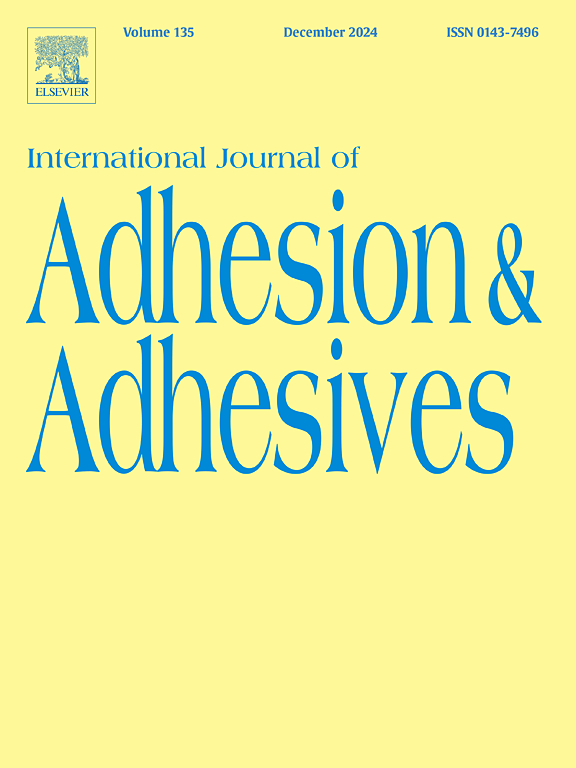High order analysis of debonding failure of orthodontic brackets
IF 3.2
3区 材料科学
Q2 ENGINEERING, CHEMICAL
International Journal of Adhesion and Adhesives
Pub Date : 2024-12-12
DOI:10.1016/j.ijadhadh.2024.103896
引用次数: 0
Abstract
The paper investigates the initiation and evolution of debonding failure in orthodontic brackets. The latter forms a layered structure consisting of the tooth, an adhesive layer, the bracket, and the inter-laminar interface. The layered structure is prone to debonding, which critically impairs the therapeutic process. The purpose of this study is to develop a quantitative model to analyze the nonlinear and potentially unstable debonding failure in the layered structure. The model integrates the concepts of the high-order theory with nonlinear cohesive interfaces and rigid body displacement field of the bonded bracket. Numerical methods, based on a specially tailored finite element formulation and the arc-length continuation method, trace the full nonlinear response path and characterize its stability. The analysis is validated through comparison with experiments documented in the literature. The principal results quantify the unstable nature of debonding failure and identify factors influencing the instability. The analysis highlights the influence of the rich stress and displacement field in the adhesive layer on failure progression. This is achieved by exploring the coupled role of shear and tensile stresses in the bond layer and the coupling of slip and separation across the interfaces, which jointly form the shear-peel effect, even under globally tangential loading. The major conclusions designate the innovative modeling approach as a tool for the investigation of the interfacial failure mechanism and a steppingstone towards modeling additional features of the layered structure, including curved surfaces, the impact of the surface conditions, and the uncertainty associated with the bonding practice.
求助全文
约1分钟内获得全文
求助全文
来源期刊

International Journal of Adhesion and Adhesives
工程技术-材料科学:综合
CiteScore
6.90
自引率
8.80%
发文量
200
审稿时长
8.3 months
期刊介绍:
The International Journal of Adhesion and Adhesives draws together the many aspects of the science and technology of adhesive materials, from fundamental research and development work to industrial applications. Subject areas covered include: interfacial interactions, surface chemistry, methods of testing, accumulation of test data on physical and mechanical properties, environmental effects, new adhesive materials, sealants, design of bonded joints, and manufacturing technology.
 求助内容:
求助内容: 应助结果提醒方式:
应助结果提醒方式:


